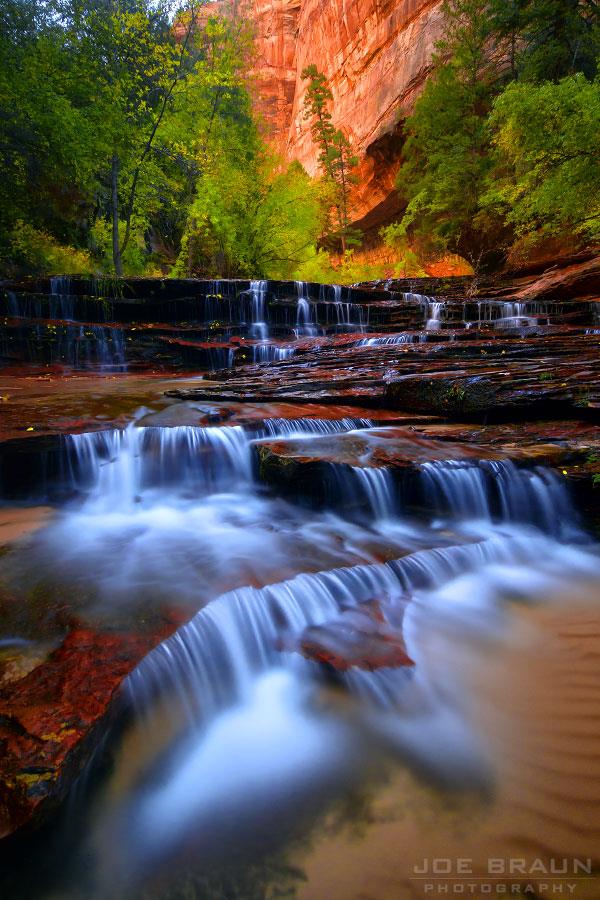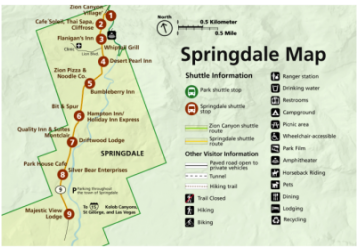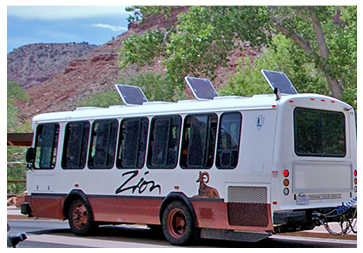Protected within Zion National Park is a spectacular cliff-and-canyon landscape and wilderness full of the unexpected including Kolob Arch - the world's largest arch - with a span that measures 310 feet. Zion National Park is full of beautiful colors, scenery and wildlife. Wildlife such as mule deer, golden eagles, and mountain lions, also inhabit the Park. The sandstone which makes up most of the rock in Zion National Park was formed by the compacting of sand about 150 million years ago. This occurred when cementing properties of compounds such as calcium carbonate compacted the sand, which covered the huge desert of the west.
Dunes were at that timed formed into the present day Navajo Sandstone. The next stage of creation occurred starting close to 4 million years ago when streams running of the Colorado Plateau caused the Virgin River to flood. As the river flowed through current area of Zion National Park, it eroded the rock away taking boulders, sand, and pebbles with it. Over time it formed, or rather carved the canyons of Zion National Park that we see today.



